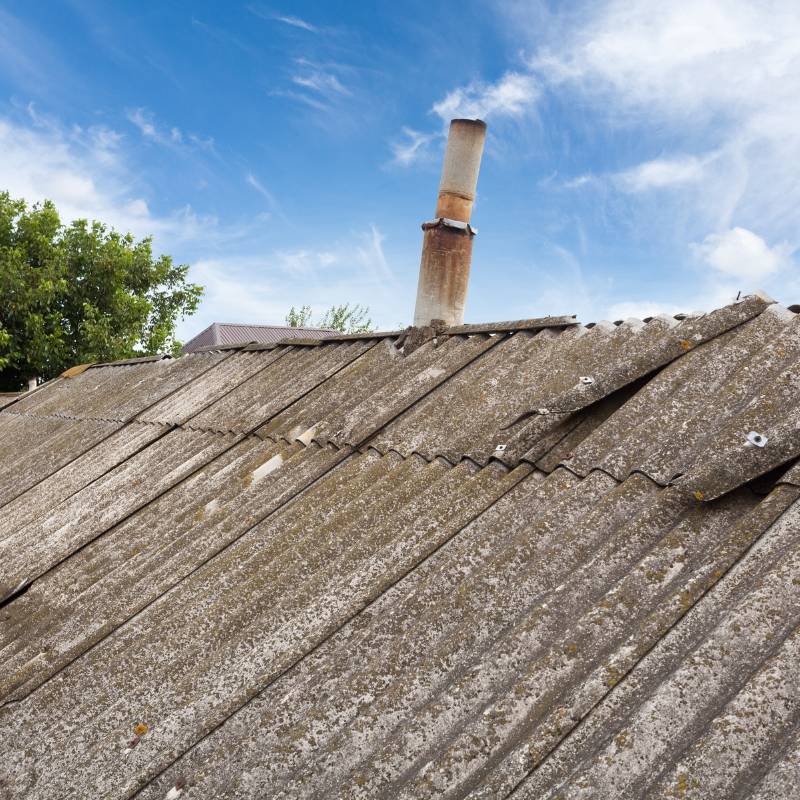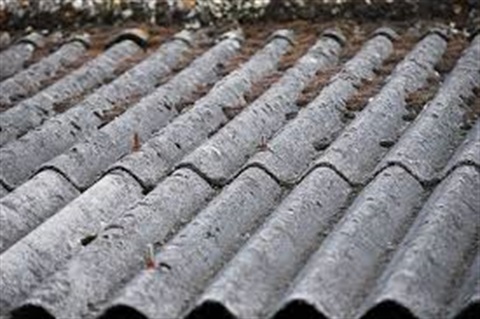Environmental Impact Of Asbestos Roof Removal Cost To Remove Asbestos Garage
Environmental Impact Of Asbestos Roof Removal Cost To Remove Asbestos Garage
Blog Article
Professional Asbestos Roof Removal Solutions Safe, Reliable And Experienced Removal Services
Asbestos risk assessment is a important process for guaranteeing the security and health of individuals uncovered to this hazardous material. Asbestos, once generally used in development and insulation merchandise, poses extreme health risks, including lung most cancers, mesothelioma, and asbestosis. Given its widespread historic use, understanding asbestos risk assessment is crucial for owners, property managers, and development professionals.
The initial phase of asbestos risk assessment usually includes identifying potential asbestos-containing materials (ACMs) in a building. This involves a thorough inspection, typically carried out by certified professionals educated in recognizing and sampling materials that may contain asbestos. Inspectors concentrate on areas corresponding to insulation, ground tiles, textured paints, and roofing materials, that are traditionally recognized for asbestos use.
Asbestos Roof Removal Licenses And Accreditation Cost Guide For Asbestos Removal

Once potential ACMs are identified, samples are collected for laboratory analysis. This step is crucial since not all materials that look much like asbestos are literally harmful. The analysis is performed to find out the presence and concentration of asbestos fibers. These laboratory results guide subsequent actions regarding management and abatement.
Risk assessment additionally contains evaluating the condition of any identified asbestos materials. Damaged or deteriorating ACMs are extra hazardous due to the increased likelihood of fiber launch into the air. Professionals look at the extent of damage and the potential for exposure based on the material’s location and situation. This assessment informs the danger stage posed to occupants and staff in proximity to the identified materials.
An integral a half of the assessment is considering the location of the ACMs. Materials in high-traffic areas could present larger risk as a end result of potential for disturbance. Likewise, materials used in ventilated areas might release extra fibers if disturbed, growing the chance of inhalation. The analysis also consists of assessing who may be uncovered and under what circumstances they might come into contact with harmful asbestos fibers.
Health Surveillance For Asbestos Workers Commercial Roofing Contractor For Removal
Determining the time frame of exposure is one other key aspect of asbestos risk assessment. Short-term exposure would possibly carry lower risks compared to long-term or repeated exposure. Although even brief encounters with excessive levels of asbestos could be dangerous, understanding these nuances helps in accurately assessing the risk to people over time.
Recommendations are then fashioned primarily based on the findings of the danger assessment. If the assessment identifies important hazards, options may embody monitoring, encapsulation, or removal of the ACMs. Each option presents its own set of issues, including cost, disruption, and long-term safety.
Regular monitoring and periodic assessments could be essential in some instances. This is as a result of situations in a building can change over time, potentially affecting the protection of ACMs. These ongoing evaluations be sure that any new risks are identified promptly, allowing for immediate corrective measures if essential.
Documentation plays a significant position in asbestos risk assessment. All findings, suggestions, and actions taken must be meticulously recorded for legal and compliance reasons. Record-keeping offers a transparent historical past of the risk assessment process, which is important for informing future assessments and guaranteeing safety regulations are followed.
Common Challenges In Asbestos Roof Removal Residential Asbestos Removal Services
Compliance with local and federal regulations is another critical consideration in the assessment process. Different jurisdictions might have particular legal guidelines governing asbestos dealing with and risk assessment. Stakeholders should be acquainted with and cling to those regulations to ensure the protection of public health and keep away from potential legal penalties.
Public education about asbestos risks is significant as properly. Many individuals stay unaware of the risks related to asbestos exposure and the importance of correct assessments. Community awareness can encourage motion, encouraging property homeowners to conduct assessments and take essential precautions, thereby lowering the general risk of exposure.
In conclusion, asbestos risk assessment is an important practice for identifying and mitigating the risks posed by asbestos in varied environments. The process encompasses thorough inspections, laboratory evaluation, situation evaluations, and compliance with regulations. Through effective risk assessment, it's attainable to safeguard public health, making it imperative for householders and professionals alike to prioritize these evaluations in properties doubtlessly containing asbestos.
Consultation Services For Asbestos Roof Removal Risks Associated With Asbestos Roofs
- Identification of asbestos-containing materials (ACMs) in buildings through thorough inspections and sampling techniques.
- Evaluation of the condition and extent of damage to ACMs, contributing to understanding the urgency of risk management.
- Assessment of exposure risks for various occupation groups working in or near asbestos sites, together with maintenance and development personnel.
- Implementation of legal and regulatory requirements, making certain adherence to local and national safety requirements relating to asbestos handling.
- Development of a tailor-made asbestos management plan, outlining steps for monitoring, maintenance, and potential removal of ACMs.
- Training and education schemes for employees on asbestos hazards and safe work practices to minimize exposure.
- Regular re-evaluations of asbestos situations to account for adjustments in the building environment or occupancy levels.
- Use of risk communication methods to tell stakeholders about asbestos presence, risks, and management activities.
- Collaboration with health professionals to monitor any health effects on workers probably exposed to asbestos fibers.
- Establishment of emergency response plans for asbestos-related incidents to effectively anonymous manage exposure risks and guarantee top article safety.
What is asbestos risk assessment?
Asbestos risk assessment is the method of evaluating the potential hazards posed by asbestos materials in a building. This assessment helps identify the presence of asbestos, evaluate its situation, and determine the level of risk to occupants and employees, guiding needed actions for management or removal.
Why is an asbestos risk assessment necessary?
Asbestos Removal Emergency Response Plans What To Do If You Find Asbestos
An asbestos risk assessment is crucial to protect the health and safety of individuals who may be uncovered to asbestos fibers - Educational Resources On Asbestos Safety. It helps identify areas where asbestos is present, assess the chance of exposure, and implement applicable control measures to mitigate these risks, making certain compliance with legal regulations
How often ought to an asbestos risk assessment be conducted?

It is really helpful to conduct an asbestos risk assessment each three years or whenever important modifications occur within the building environment, such as renovations or modifications in occupancy. Regular reassessment ensures that any changes in asbestos situation or risk exposure are promptly identified and addressed.
Who ought to conduct the asbestos risk assessment? (Public Health Implications Of Asbestos Exposure)
Successful Asbestos Roof Removal Stories What To Do If You Find Asbestos
The assessment should be carried out by a certified and licensed asbestos professional with expertise in identifying and managing asbestos-containing materials. This ensures that the assessment is thorough, correct, and compliant with local regulations and safety guidelines.

What happens if asbestos is discovered during the risk assessment?
If asbestos is discovered, the qualified professional will advise on one of the best course of action, which may embody leaving it undisturbed if it is in good condition, encapsulating it, or safely eradicating it. Ongoing monitoring and management plans will sometimes be established to make sure safety.
Can I perform an asbestos risk assessment myself? - Aftercare Following Asbestos Roof Removal
Environmental Restoration After Asbestos Removal Cost To Remove Asbestos Garage
While some preliminary assessments can be made by individuals who're knowledgeable about asbestos, it's strongly recommended to hire an authorized professional for a comprehensive risk assessment. Professionals have the right training and instruments to accurately identify and evaluate asbestos risks.
What are the potential health risks of asbestos exposure?
Asbestos exposure can result in severe health issues, including asbestosis, lung most cancers, and mesothelioma. These conditions typically develop after extended exposure, making it crucial to evaluate and manage asbestos risks diligently to guard public health.
Sydney Asbestos Roof Removal Contractors Commercial Roofing Contractor For Removal
Are there regulations concerning asbestos risk assessments?
Yes, many international locations have specific regulations governing asbestos management, including the requirement for regular risk assessments in industrial buildings and certain residential structures. Compliance with these regulations is obligatory to ensure safety and keep away from legal repercussions.
What ought to I do if I suspect asbestos in my home?
Preventing Asbestos Contamination During Roof Work Best & Cheap Removal Services Available
If you believe you studied the presence of asbestos in your home, do not disturb the material. Contact a licensed asbestos professional to conduct a risk assessment and determine one of the best plan of action to administer or take away the asbestos safely.
Report this page